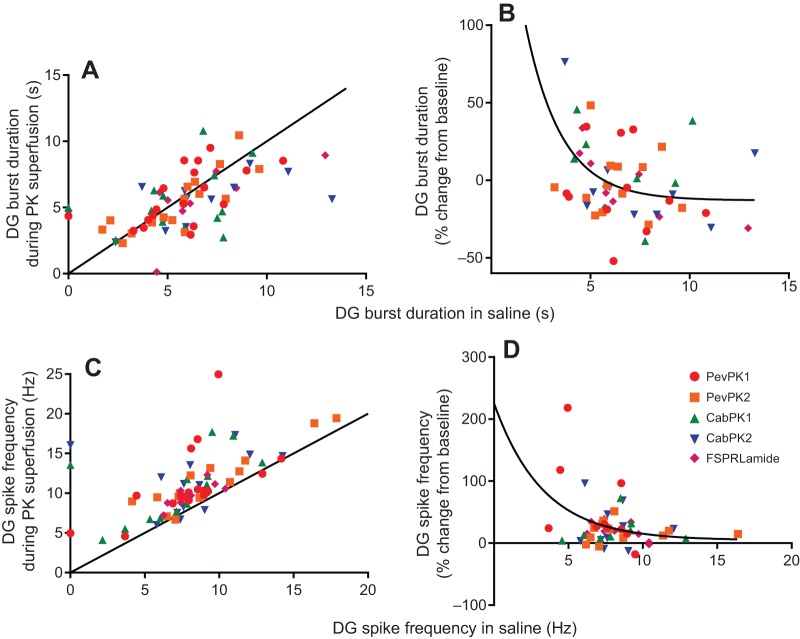Fig. 8.
All five pyrokinins increased spike frequency but did not consistently alter burst duration within dorsal gastric neuron bursts. (A) Burst duration did not consistently change in the presence of the pyrokinins, as seen by the even distribution of points above and below the equality line. (B) Changes in burst duration were highly variable between preparations, as seen by the wide scatter of points; the mean change in burst duration was thus not significantly different from 0 (P=0.99, one sample t-test, N=56), although some individual changes were quite large. Consequently, the R2 values for a one-phase exponential decay or linear regression was only 0.19. However, the slope of a linear regression (not shown) was significantly non-zero (P=0.01), suggesting that the extent of the change is nonetheless dependent on the starting spike frequency. (C) Spike frequency consistently increased in all of the pyrokinins, with no obvious differences between isoforms. In nearly all cases, the points fall above the equality line. (D) As was the case with burst duration, the extent of the increase in dorsal gastric (DG) neuron spike frequency was highly variable between preparations. Nonetheless, a single value t-test for pooled data showed that mean spike frequency did increase (t-test, P<0.001, N=53). Although R2 for the non-linear regression was only 0.12, the slope of a linear fit was significantly different from 0 (P=0.02), indicating that the change was dependent on the starting conditions, but that other factors are likely also important in determining the extent of the response to pyrokinins in the dorsal gastric neuron. Moreover, there were no differences between peptides in the extent to which spike frequency increased (ANOVA, P=0.66, d.f.=4.48), nor in the residuals from the non-linear fit (P=0.9).

